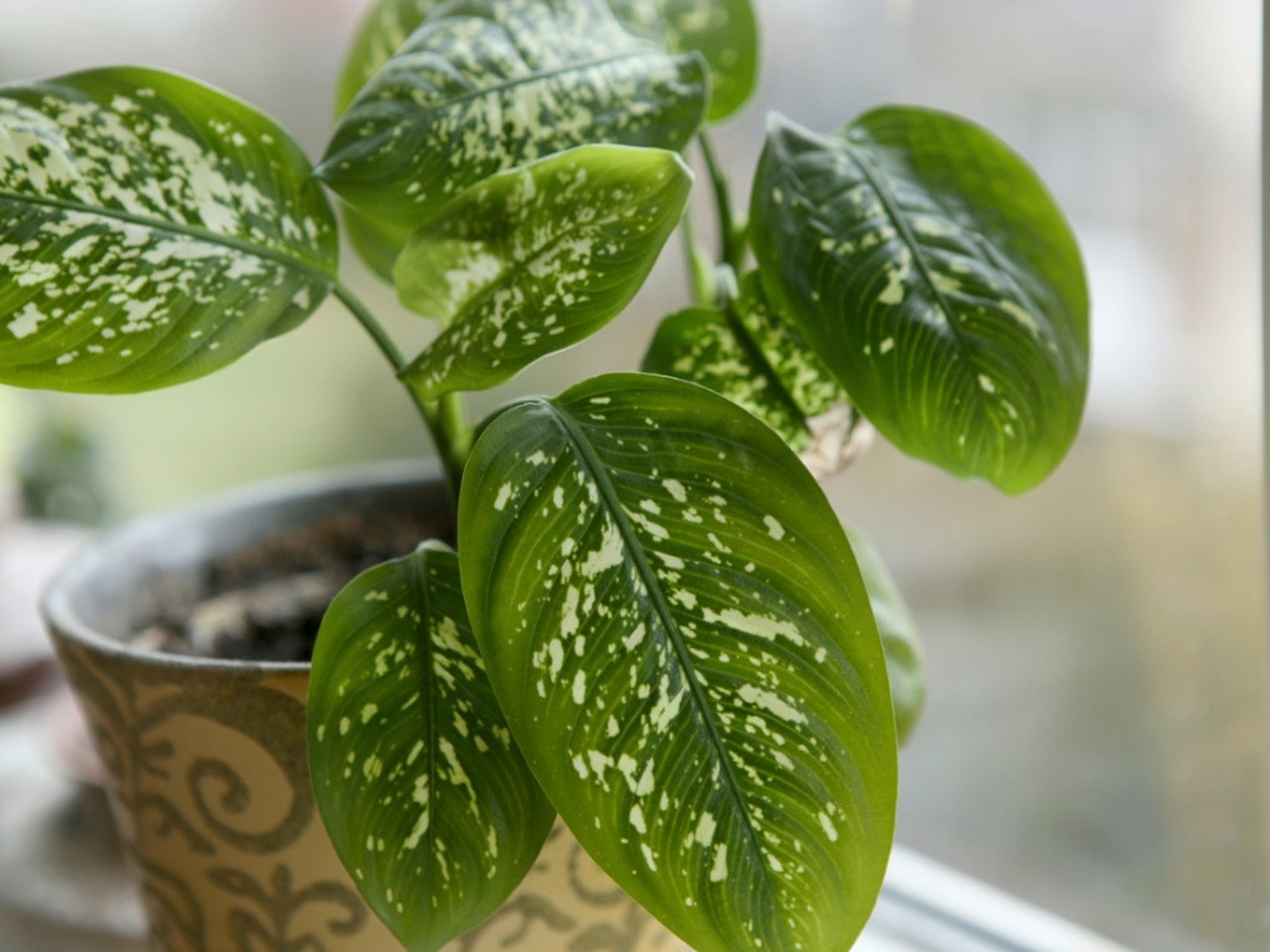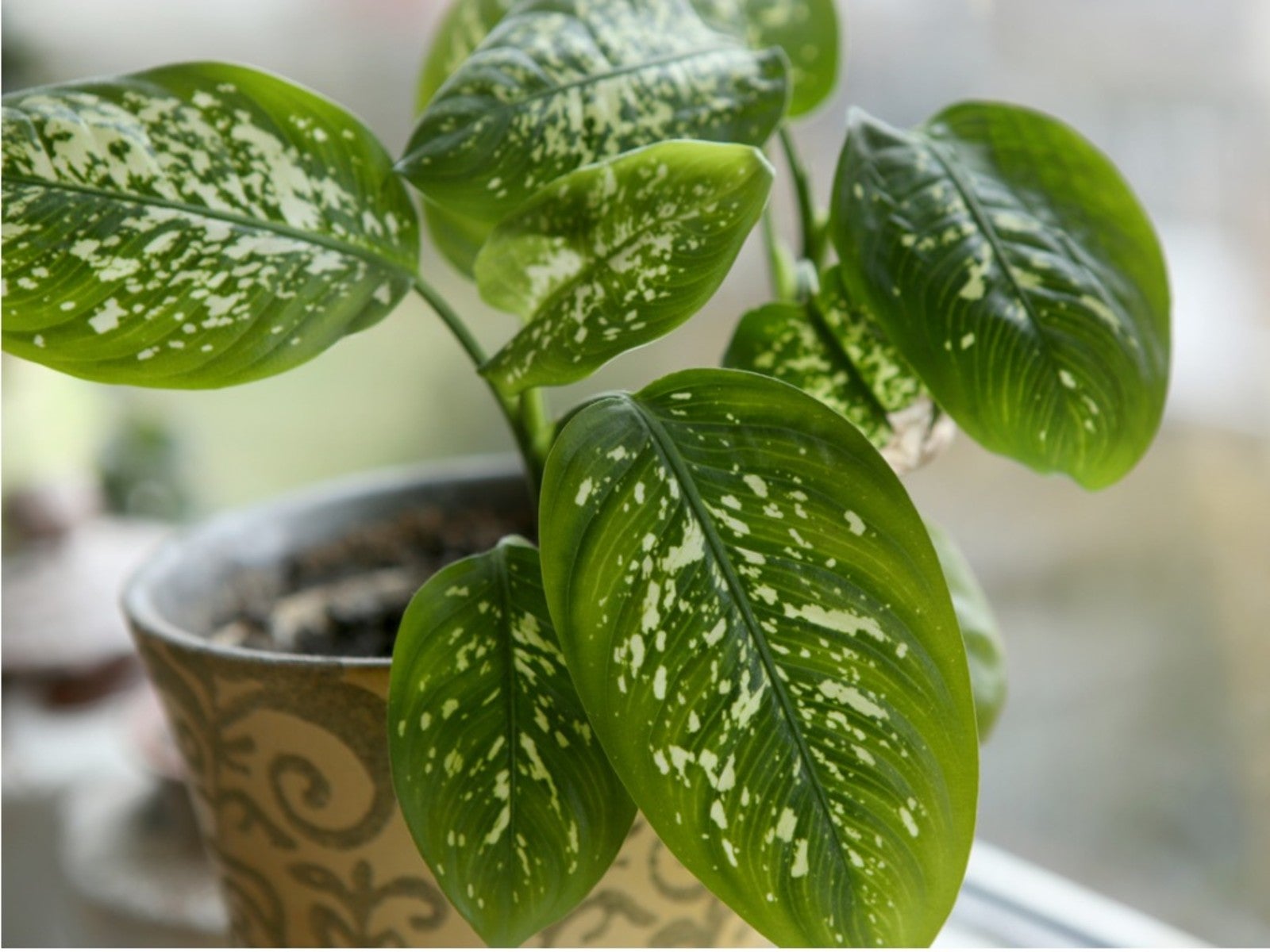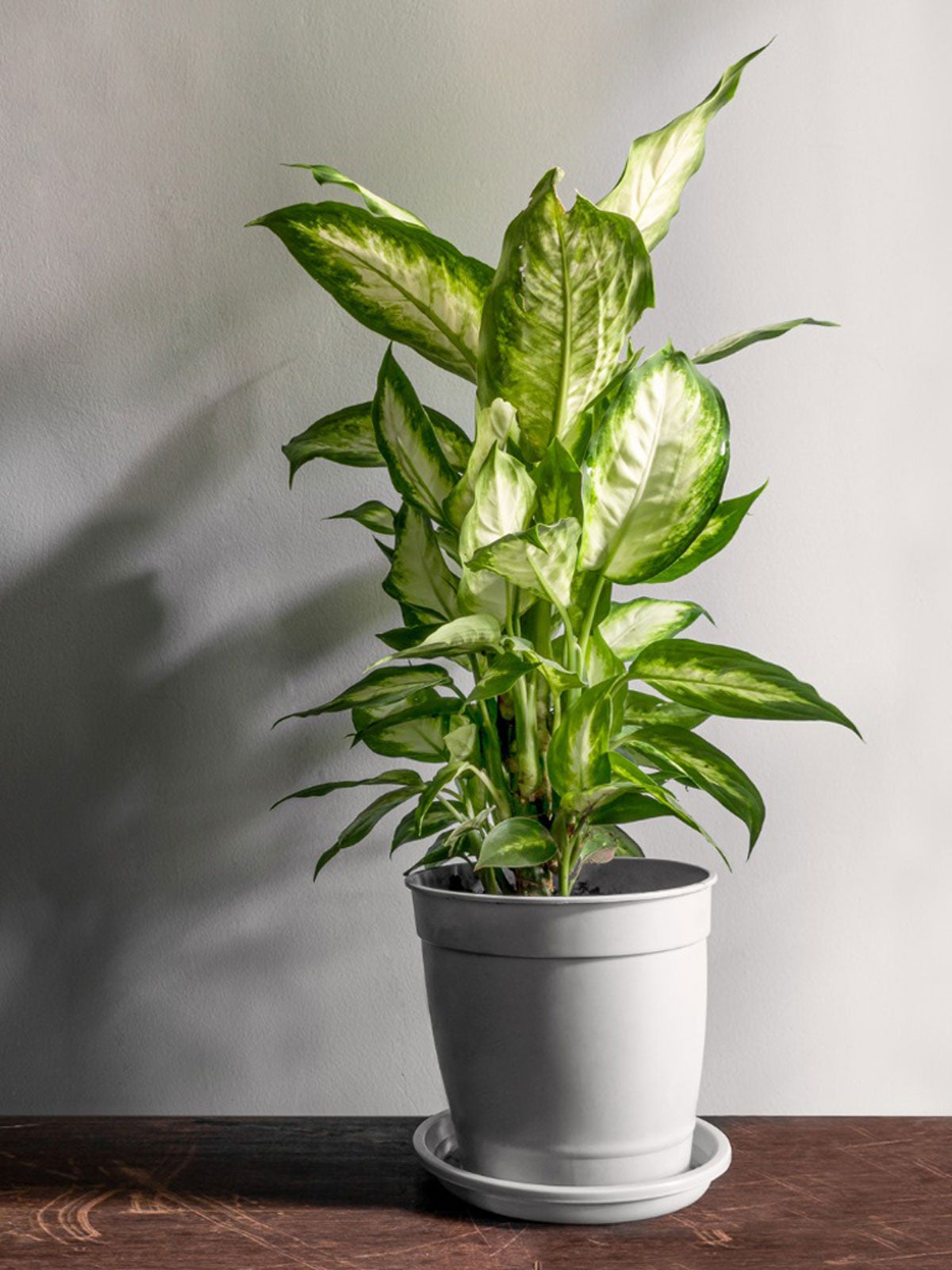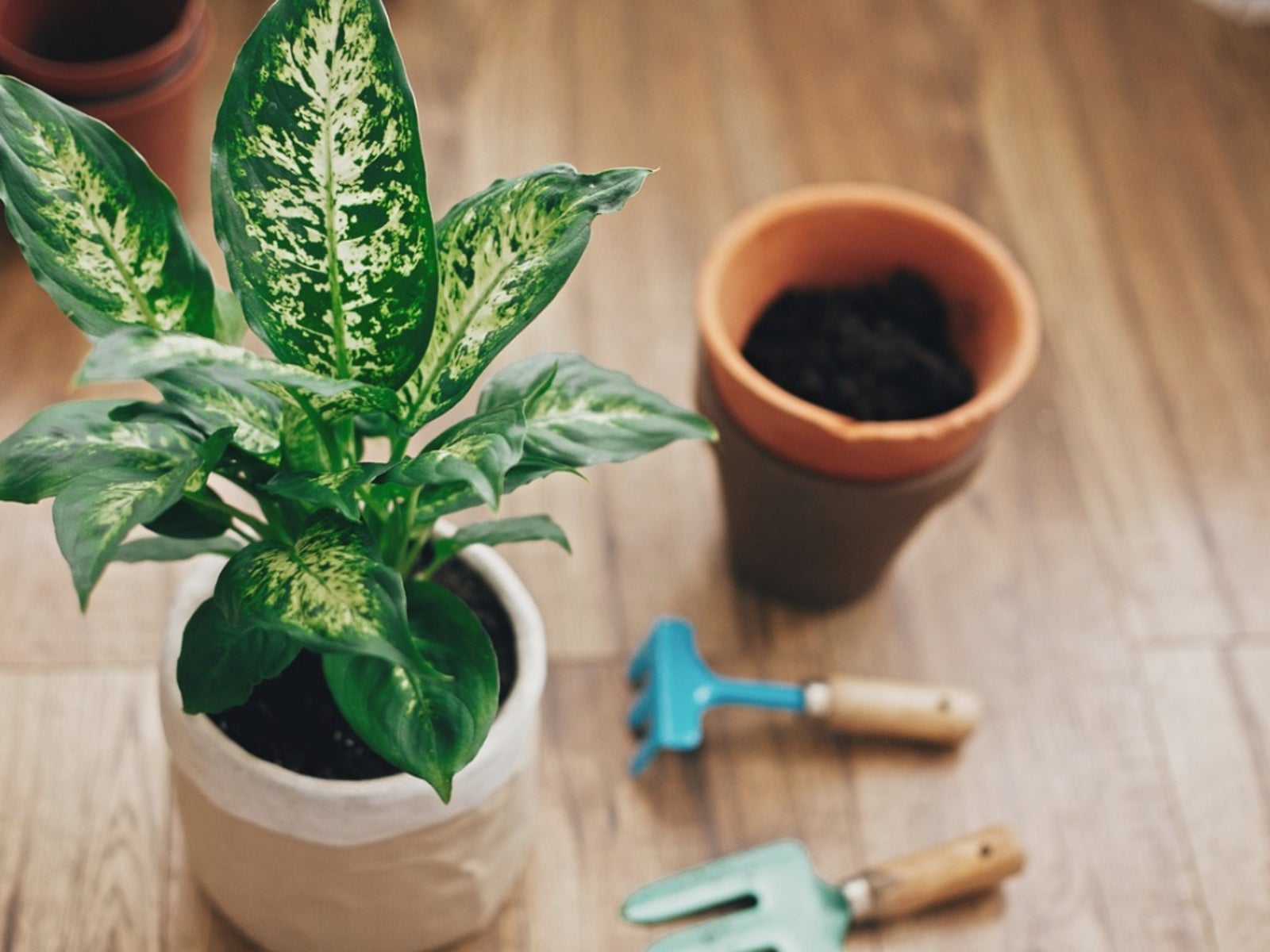Dieffenbachia Pruning Guide – Should You Cut Back Dieffenbachia Plants


One of the most attractive and easy to grow indoor foliage plants is dieffenbachia. This easy going tropical can tend to get leggy and grow unwieldy top growth in some situations. That’s when you know it is time to cut back dieffenbachia. The cut material can be used to start new plants.
Pruning a dieffenbachia is not the same as pruning an evergreen shrub or tree. It is done only to preserve the form, remove dead leaves, and make the growth bushier. When you take top growth off, the plant responds by producing branching stems that make the leaves denser. Regular dieffenbachia pruning results in a thick, strong plant.
Tips on Trimming Dieffenbachia
With some plants, timing is everything with regard to pruning. Dieffenbachia pruning is different, as it doesn't matter what time of year you practice the task. Trimming dieffenbachia when leaves are damaged or dying, the plant is top heavy, or you are trying to get a young plant to flush new, thicker growth can be done any time.
Just remember, the sap is poisonous and it can cause skin irritation. Use gloves to prevent sap from getting on your skin, or you could get some nasty contact dermatitis. Wash hands and tools well after pruning.
How to Prune Dieffenbachia
It is quite easy to cut back dieffenbachia. In order to reduce the plant’s size, cut the upper stem back to a leaf node. If you want to promote bushier growth, remove top growth by pinching or, in older plants, with pruners or shears. New growth will come in just below the cut. If there are damaged leaves, remove the leaf up to the stem, just don't cut into the main stem.
Instead of removing the entire leaf, you can trim off brown edges by following the curve of the leaf. Always use clean, sharp cutting implements to prevent damage or disease introduction. Don't throw away cuttings -- you can use them to start more of these easy care plants.
Rooting Cuttings
After pruning back your dieffenbachia's growth, use the cuttings to start more plants. Prepare a container of sterile plant medium and moisten it thoroughly but not until soggy. Pull off the bottom 1/3 of the leaves and dip the stem into rooting hormone. Shake off the excess hormone. Use a pencil to make a hole in the planting medium and insert the treated stem, packing a bit of medium around the cutting to keep it upright.
Gardening tips, videos, info and more delivered right to your inbox!
Sign up for the Gardening Know How newsletter today and receive a free copy of our e-book "How to Grow Delicious Tomatoes".
Place the container in a moderate light area of the home. You can also try rooting stems in a glass of room temperature water. Use distilled or purified water to avoid the chemicals and minerals in tap water. Change the water frequently. In time, you will observe roots and it will be time to put the cutting in soil.

Bonnie Grant is a professional landscaper with a Certification in Urban Gardening. She has been gardening and writing for 15 years. A former professional chef, she has a passion for edible landscaping.
-
 Terrifically Tubular Flowers For Hummingbirds: 9 Tube-Flowered Plants To Attract Hummers
Terrifically Tubular Flowers For Hummingbirds: 9 Tube-Flowered Plants To Attract HummersGrowing tubular flowers for hummingbirds helps you create the optimum feeding conditions for your winged friends. Here are nine tubed delights for hummers
By Tonya Barnett
-
 How To Grow Hydroponic Tomatoes For Fresh Indoor Harvests – No Soil Required
How To Grow Hydroponic Tomatoes For Fresh Indoor Harvests – No Soil RequiredLearning how to grow tomatoes in water is easy and allows you to harvest fresh-home-grown produce in every season without any mess.
By Ellen Wells
-
 Dieffenbachia Troubleshooting – Learn About Dieffenbachia Diseases
Dieffenbachia Troubleshooting – Learn About Dieffenbachia DiseasesDon’t be surprised if you have problems with dieffenbachia, as it is no different from other plants when it comes to this. Read on for tips.
By Becca Badgett
-
 Dieffenbachia Care In Winter: How To Winterize Dieffenbachia Plants
Dieffenbachia Care In Winter: How To Winterize Dieffenbachia PlantsOverwintering houseplants is important, and dieffenbachia needs specific conditions in the winter. Click this article for more information.
By Mary Ellen Ellis
-
 Propagating A Dieffenbachia: How To Propagate Dieffenbachia Plants
Propagating A Dieffenbachia: How To Propagate Dieffenbachia PlantsDieffenbachia is an attractive houseplant that adds a tropical statement to almost any room. You have the potential for an endless supply of new plants by propagating cuttings, and this article will help.
By Anne Baley
-
 Growing Dumbcane Dieffenbachia - How To Care For A Dieffenbachia Plant
Growing Dumbcane Dieffenbachia - How To Care For A Dieffenbachia PlantA true houseplant standby, Dieffenbachia is a beautiful specimen. Click here to learn about this beautiful classic.
By Becca Badgett